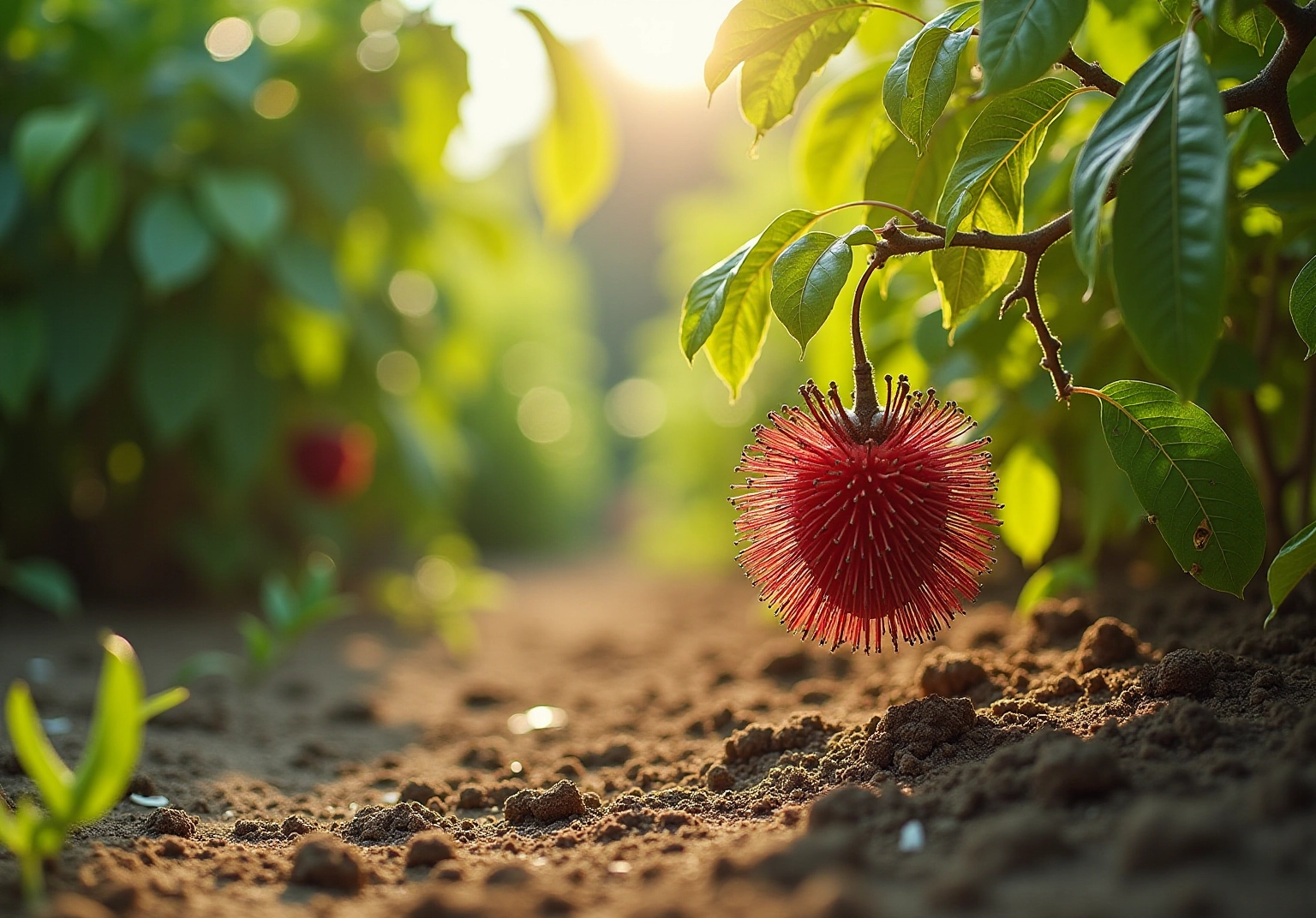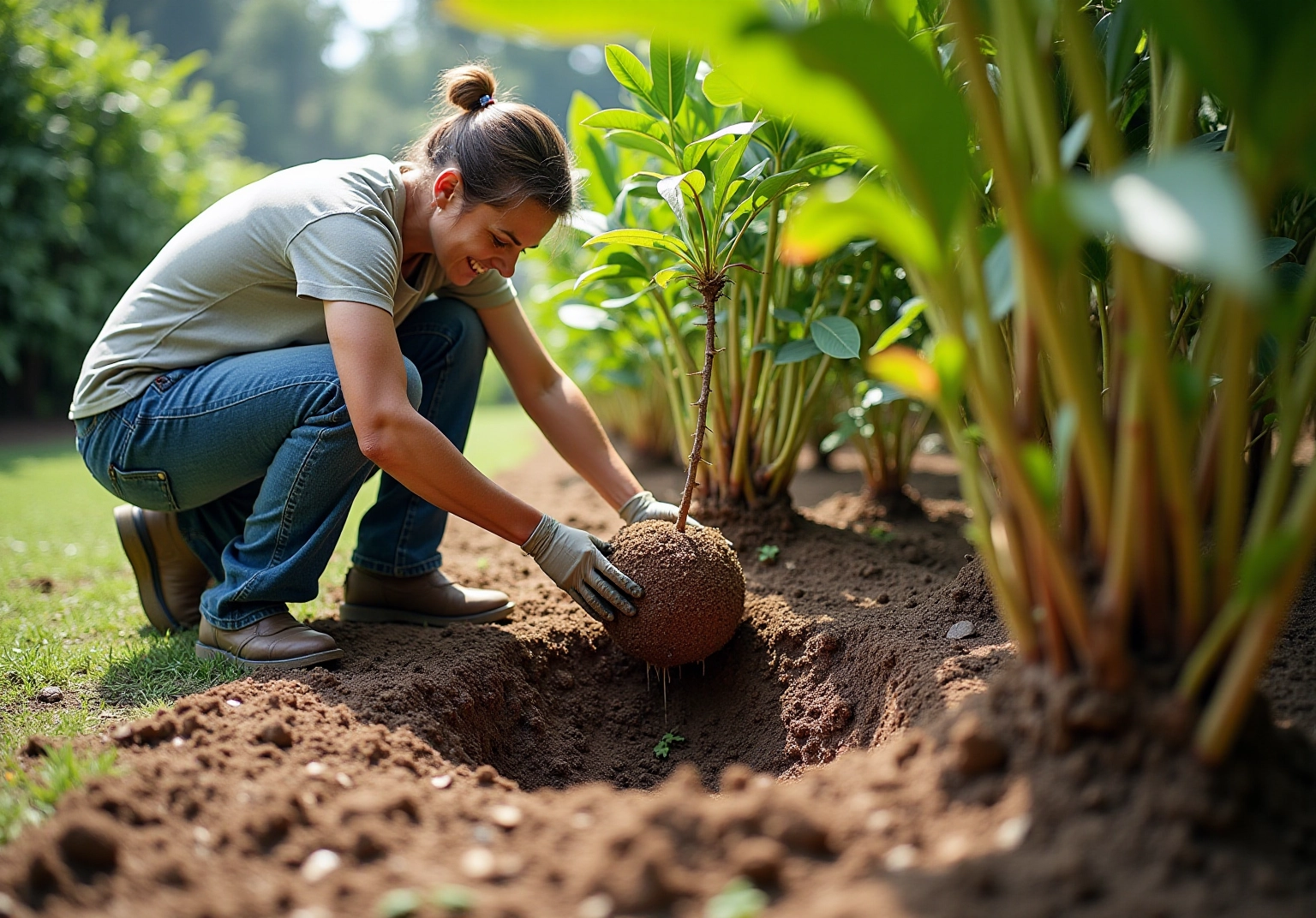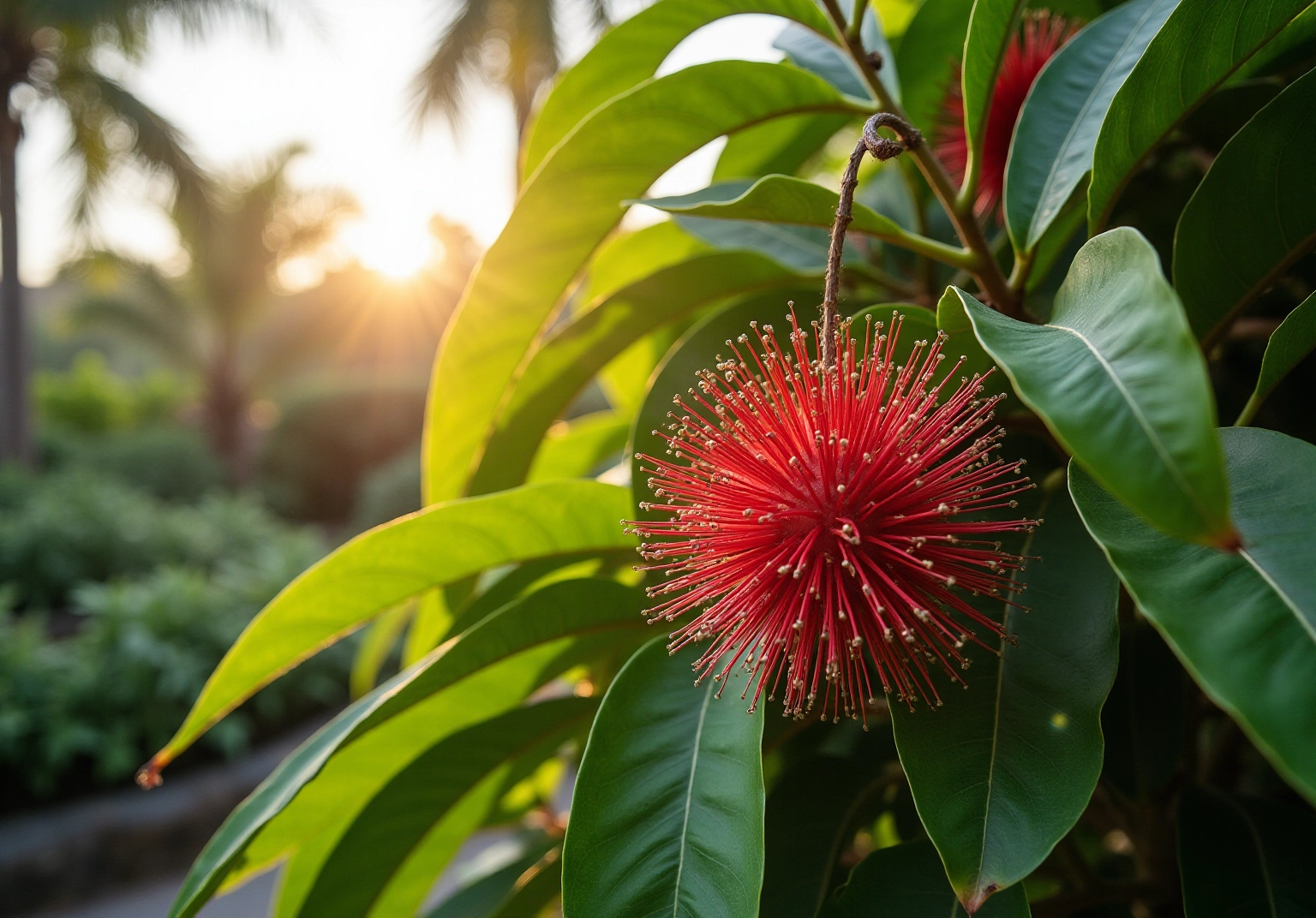Successfully growing a rambutan tree in Florida presents a rewarding venture, particularly due to the state's favorable climate for this tropical fruit.
With appropriate practices in place, gardeners can cultivate these unique trees and enjoy the benefits of their delicious, exotic fruit.
However, this journey comes with challenges—what key strategies can ensure a thriving rambutan tree, and how can one effectively troubleshoot common growth issues?
This article explores essential practices for nurturing rambutan trees, providing insights into optimal care, planting techniques, and solutions to potential problems, all aimed at helping enthusiasts turn their gardening aspirations into fruitful realities.
Thinking about growing a Rambutan Tree?
👉 Shop Red Rambutan Tree grown with care at Everglades Farm and shipped from our Florida nursery.
The article outlines four key practices essential for successfully growing a rambutan tree for sale in Florida. These practices include:
- Understanding the plant's growing conditions
- Implementing effective planting techniques
- Maintaining optimal care
- Troubleshooting common challenges
By ensuring the right temperature and soil conditions, along with consistent care such as regular watering and fertilization, gardeners can cultivate healthy rambutan trees that thrive in Florida's climate. This comprehensive approach not only enhances the growth of the trees but also maximizes their potential for successful sales.
1. Understand Rambutan Growing Conditions in Florida
Rambutan plants thrive in warm, humid environments, ideally within a temperature range of 71°F to 86°F (21°C to 30°C). Florida, particularly its southern regions, frequently meets these conditions, making it an excellent location where you can find a rambutan tree for sale in Florida. It is crucial to protect the plants from temperatures dropping below 50°F (10°C), as such exposure can cause significant damage. Furthermore, full sun exposure is essential; rambutan trees should receive a minimum of 13 hours of sunlight daily.
The soil should be well-draining and slightly acidic, with a pH range between 5.5 and 6.5. Sandy loam or clay loam soils are preferred for optimal drainage and nutrient accessibility. Additionally, maintaining humidity levels between 75% and 80% is vital for the successful cultivation of a rambutan tree for sale in Florida's subtropical climate. Consistent irrigation is also necessary to ensure the plants' health and vigor.
To support your gardening efforts, consider using Everglades Farm's professional-grade fertilizers, specifically designed to enhance growth and yield. Visit our website to explore our Fast-Growing Trees collection and elevate your home gardening experience!

2. Implement Effective Planting Techniques for Rambutan Trees
To effectively plant rambutan plants, select a location that receives ample sunlight and is shielded from strong winds. Begin by excavating a hole that is at least twice the width and the same depth as the root ball, which facilitates better root expansion. Enhance drainage by incorporating organic matter such as compost or peat moss. It is crucial to position the plants 30 to 40 feet apart, considering their mature size and ensuring adequate air circulation. After placing the plant in the hole, backfill with soil, making sure the root collar is level with the surrounding ground. Water the plant thoroughly post-planting to eliminate air pockets and promote root establishment. Applying mulch around the base will aid in moisture retention and suppress weed growth, fostering a healthy start for your fruit plant.
Furthermore, consider the following best practices for planting soursop plants, which can also benefit your fruit-bearing tree:
- Ensure proper spacing to accommodate growth
- Prepare the soil by testing pH and nutrient levels
- Water regularly, particularly during dry spells
- Monitor for pests such as mealybugs and powdery mildew, and implement proactive measures to manage them
By incorporating these practices, you will enhance the growth and vitality of your tropical plants while enriching your overall gardening experience.

3. Maintain Optimal Care for Healthy Rambutan Growth
To ensure the healthy growth of rambutan plants, especially those from a rambutan tree for sale in Florida, consistent watering is vital, particularly during dry seasons. Aim to provide at least 1 inch of water weekly, adjusting for rainfall to maintain optimal soil moisture. Rambutan plants thrive in humidity levels of 75-80%, which is essential for their overall well-being.
Fertilization plays a critical role in promoting robust foliage and fruit development. A balanced fertilizer, such as a 15-30-15 formula, should be applied every 6-8 weeks during the growing season. Before fruiting, consider using a 13-40-13 fertilizer, and switch to a 20-20-20 formula post-harvest to meet the plant's changing nutritional needs.
Monitoring for pests, including fruit flies and borers, is essential. Applying integrated pest management strategies—such as using organic pesticides like neem oil or insecticidal soap—can help safeguard the plants. Pruning should be minimal, focusing on the removal of dead or damaged branches to enhance air circulation and mitigate disease risks.
Additionally, ensure the soil pH is maintained between 5.5 and 6.5 and that the soil depth is adequate (6-9 feet) to support healthy root development. By following these practices, gardeners can nurture flourishing tropical plants, such as a rambutan tree for sale in Florida, that produce plentiful fruit.

4. Troubleshoot Common Rambutan Growing Challenges
Cultivating rambutan plants involves navigating several challenges, with leaf drop being a prevalent concern. This issue often arises from stress due to temperature fluctuations, high humidity, or inconsistent watering practices. To mitigate leaf drop, it is crucial to:
- Maintain consistent soil moisture
- Ensure proper drainage
- Protect the plants from cold snaps
Additionally, incorporating organic matter into the soil can enhance its structure and nutrient retention.
Inadequate fruit set may indicate insufficient pollination; therefore, planting multiple rambutan trees can facilitate cross-pollination, thereby improving fruit yield. Regular inspections for pest infestations are vital; promptly applying organic treatments, such as neem oil or insecticidal soap, can effectively manage any outbreaks. Furthermore, maintaining appropriate soil pH and nutrient levels is essential for the overall health of the plants. Conducting periodic soil tests will help ensure that your rambutan trees thrive in optimal conditions, thus preventing various growth-related issues.
Lastly, practicing good garden hygiene by removing plant debris is important for controlling fungal spread, which can be worsened by poor ventilation. By following these care practices, you can cultivate healthy rambutan plants that flourish in your garden, particularly if you purchase a rambutan tree for sale in Florida.

Conclusion
Growing a rambutan tree in Florida offers an exciting opportunity for both new and seasoned gardeners. By understanding the specific growing conditions, effective planting techniques, and optimal care practices, gardeners can significantly enhance their chances of success. Focusing on the unique climate and soil requirements of rambutan allows for the creation of an environment conducive to healthy growth and bountiful fruit production.
Key insights include:
- The importance of maintaining appropriate temperature ranges
- Ensuring well-draining, slightly acidic soil
- Providing consistent moisture
Proper planting techniques, such as spacing and soil preparation, are essential, as are ongoing care practices like regular watering, fertilization, and pest monitoring. Additionally, troubleshooting common challenges, such as leaf drop and inadequate fruit set, is crucial for maintaining plant health.
In conclusion, cultivating rambutan trees in Florida enriches the local ecosystem and offers a rewarding gardening experience. By implementing these best practices and remaining vigilant in care and maintenance, gardeners can enjoy the fruitful rewards of their efforts. Embrace the journey of growing rambutan, contributing to the vibrant agricultural landscape of Florida, and ensuring that your trees flourish and yield delicious fruit for years to come.
Cultivate Your Own Tropical Paradise Today!
Start growing rambutan and other tropical fruits with Everglades Farm's premium trees delivered to your doorstep.
🌳 Explore Exotic Trees
🌳 Explore Fruit Tree Collection
🌳 Buy Red Rambutan Tree
Frequently Asked Questions
What are the ideal temperature conditions for growing rambutan in Florida?
Rambutan plants thrive in temperatures ranging from 71°F to 86°F (21°C to 30°C).
What should be done to protect rambutan plants from cold temperatures?
It is crucial to protect rambutan plants from temperatures dropping below 50°F (10°C), as exposure can cause significant damage.
How much sunlight do rambutan trees require?
Rambutan trees should receive a minimum of 13 hours of sunlight daily for optimal growth.
What type of soil is best for rambutan cultivation?
Rambutan plants prefer well-draining, slightly acidic soil with a pH range between 5.5 and 6.5, such as sandy loam or clay loam.
What humidity levels are necessary for growing rambutan?
Maintaining humidity levels between 75% and 80% is vital for the successful cultivation of a rambutan tree.
How important is irrigation for rambutan plants?
Consistent irrigation is necessary to ensure the health and vigor of rambutan plants.
Where can I find fertilizers suitable for growing rambutan?
Everglades Farm offers professional-grade fertilizers specifically designed to enhance the growth and yield of rambutan plants.





0 comments